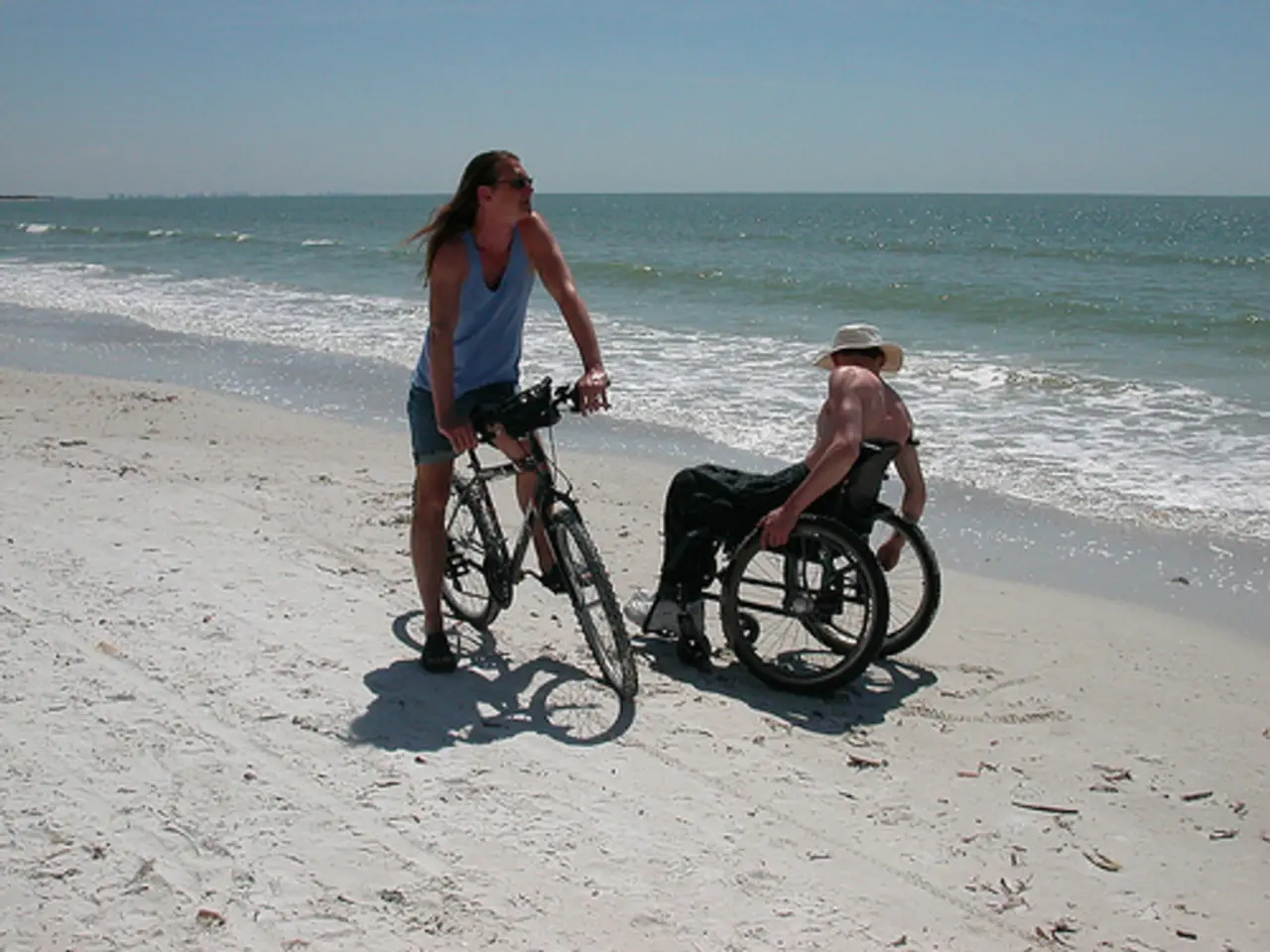Face Hives: Identifying Symptoms, Exploring Causes, Discussing Treatments, and Predicting Prognosis
Hives are a common skin condition that can be bothersome and uncomfortable. They appear as raised, itchy welts that vary in size and can appear suddenly on various parts of the body, including the face.
Common Causes
Hives can be triggered by a variety of factors. These include viral infections, allergies to foods, medications, insect bites, or physical triggers such as heat, pressure, or stress. In some cases, hives may occur without a clear trigger, a condition known as chronic idiopathic urticaria.
Symptoms
The symptoms of hives typically manifest as raised, red, itchy welts or bumps on the skin. These can vary in size and shape and may itch intensely. Hives related to allergies usually develop within minutes to a couple of hours after exposure and resolve within about 12 hours, whereas hives caused by infections may last several days.
Treatments
Treating hives involves a combination of strategies. Common treatments include second-generation antihistamines such as cetirizine, desloratadine, fexofenadine, or levocetirizine. These medications block the histamine responsible for the reaction and relieve redness and itching without sedation.
Avoiding known triggers is also essential, especially in allergy-related cases. First-generation antihistamines are less preferred due to sedation but may be used for severe cases. For chronic or persistent hives, managing underlying causes or triggers, such as stress, is helpful.
If symptoms worsen or include difficulty breathing, emergency care is needed.
Managing Chronic Hives
People with chronic hives may wish to take extra steps to minimize symptoms. This includes avoiding overheating, keeping the skin moisturized, and using fragrance-free, non-irritating skin care products.
Hives and Underlying Conditions
In about 5% of people who experience hives, it can be a sign of an underlying condition such as liver or thyroid disease. It's important to note that hives are not contagious.
Face and Hives
The face is a common area for hives to affect due to the skin there often coming into contact with allergens and other irritants. People with chronic facial hives should see a doctor or allergist.
Other Considerations
Severe itching from hives can lead to skin infection. Staying away from triggers can help prevent future hives rashes. It's also worth noting that anaphylaxis, a severe allergic reaction, requires emergency treatment.
Risk factors for hives include having asthma, a family history of asthma, eczema, or hay fever. Contact dermatitis rash may not appear until 1-2 days after contact and can take time to heal. A telltale sign of hives is that pressing down on a welt will turn its center white.
If hives are persistent or severe, consulting a healthcare professional is recommended for diagnosis and tailored treatment.
- In some cases, hives can be a sign of underlying medical-conditions such as liver or thyroid disease.
- Hives are often triggered by allergies to foods, medications, insect bites, or physical triggers such as heat, pressure, or stress.
- Severe itching from hives can lead to skin infection, and it's essential to stay away from triggers to prevent future hives rashes.
- Hives can appear suddenly on various parts of the body, including the breast or face, which is a common area for hives to affect due to the skin there often coming into contact with allergens and other irritants.
- Infectious hives may last several days, while hives related to allergies usually develop within minutes to a couple of hours and resolve within about 12 hours.
- People with asthma or a family history of asthma, eczema, or hay fever may have a higher risk of developing hives.
- Contact dermatitis rash may not appear until 1-2 days after contact and can take time to heal.
- Treating hives involves a combination of strategies, including second-generation antihistamines such as cetirizine, desloratadine, fexofenadine, or levocetirizine, which block the histamine responsible for the reaction and relieve redness and itching without sedation.
- People with chronic hives may wish to take extra steps to minimize symptoms, such as avoiding overheating, keeping the skin moisturized, and using fragrance-free, non-irritating skin care products.
- Anaphylaxis, a severe allergic reaction, requires emergency treatment.
- Science has advanced our understanding of health-and-wellness, and medical professionals now recognize that mental-health, such as bipolar disorder, can coexist with skin-conditions like hives.
- Predictive analysis in the field of science can help identify underlying causes of medical-conditions like colitis, ulcerative colitis, diabetes, spondylitis, or nsclc, which may be associated with hives in certain individuals.




